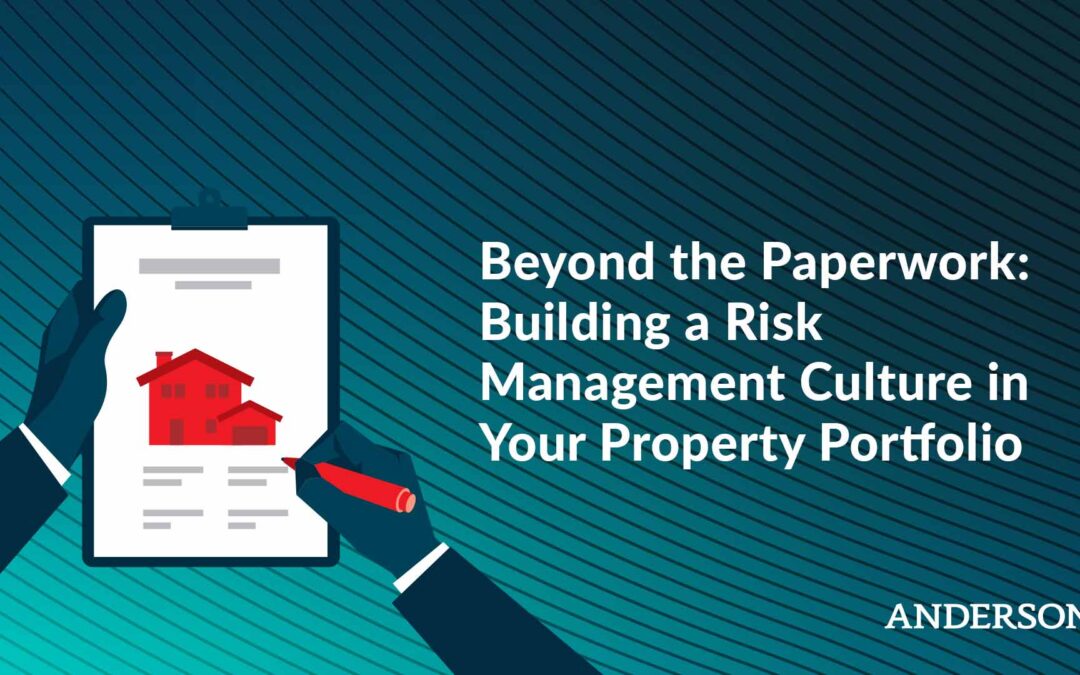
When you build a diverse property investment portfolio, you have extensive opportunities for success and growing wealth. However, as you acquire more properties, you also add more risk potential to your portfolio. This is because assets that don’t have proper protection can cost you more money in the long-run, often resulting from circumstances like high taxes, litigation, and depreciation. Here are some steps to follow that will help you build a risk management culture in your property portfolio by planning for the future and keeping everyone in the investment company actively involved in the process.
Key Takeaways
- Identifying your current risks and the methods you use to manage them will show you which aspects of your portfolio need extra protection or new risk management efforts.
- Establishing clear goals and creating an action plan for how you’ll achieve each one will organize your risk management efforts and increase your chances of reaching your objectives.
- It’s important to be transparent about your risk management plan and discuss it with everyone involved to get feedback and ensure all shareholders and staff know how to contribute.
- Regularly assessing your progress and identifying which aspects of your risk management plan work and which don’t will help you streamline your efforts and protect your assets more effectively.
- AndersonAdvisors provides a holistic approach to risk management and asset protection that considers all of your company’s needs and goals to achieve stability and mitigate ongoing risk.
Evaluate Your Portfolio’s Current Risk
The first step in establishing a culture of risk management in your property portfolio is identifying the current risks that it’s facing. This can include financial threats as well as regulatory and litigious risks. When thinking about your portfolio’s current risk, identify aspects of it that have the potential to cost you more money over time or to skyrocket in expenses due to unforeseen circumstances. This might include risks like a volatile real estate market in a particular city, an especially expensive type of property acquisition, and the potential for unreliable tenants in rental properties.
It’s beneficial to speak with other stakeholders in the portfolio when doing this, like shareholders in your real estate business, tenants living in your properties, and any staff you maintain to run the properties. By getting feedback from other parties, you have a better chance of getting a comprehensive view of all your potential risks. While assessing your risk, also identify methods you currently use for risk management, such as insurance policies and other procedures. This will let you determine which methods are successful for your portfolio and which you may need to switch out for a new plan.
Tax & Asset Protection Workshop
Learn about Real Estate & Asset Protection at our next
FREE LIVE STREAM
Set Clear Goals for Reducing Risk
Once you identify the risks you want to manage better, create some goals to work toward that will improve asset protection. It’s important to identify goals that are clear and measurable, as this will help you track your progress and determine which methods work the best for you. For example, if you want to reduce the risk of having multiple properties in a city with a poor-performing real estate market, you might set a goal of acquiring properties in different cities or states with better potential for lucrative returns that help to make up the cost of more expensive properties.
Develop a Risk Management Plan
After you identify the risks you want to mitigate, create a detailed risk management plan. This should outline all of your goals and the specific steps you’ll take to achieve them. When developing your risk management plan, think about the tools and strategies that will best help you reach your goals. For example, if one of your goals is to avoid extra costs from unexpected regulatory changes, you might designate someone to research the regulations in your area continuously so you can prepare for upcoming changes and adjust your strategies as needed.
There are several other ways to add to your risk management plan, like identifying specific ways you’ll diversify your property portfolio. This might involve acquiring different types of properties or looking at properties in a new location. You can also prepare for fluctuations in the real estate market, both in your specific state and the entire country, by creating plans for staying on top of new trends. To do this, you can use technologies and tools that automatically evaluate and organize market data to showcase the information you need.
Educate Staff and Shareholders
When you’re getting ready to put your risk management plan into action, speak with your staff and shareholders before implementing it. This will give you the chance to prepare everyone for changes in operations and strategies, which will increase the chances of your plan succeeding.
You can also use this time to get feedback on your plan from everyone involved, which will give you access to other ideas you may not have considered. Similarly, it’ll help identify aspects of your plan that may not work as well as you initially thought, based on expertise from people involved in specific parts of managing the portfolio.
Implement Your Risk Management Plan
Implementing your risk management plan will be an ongoing process. Once your shareholders and staff are informed about the changes to your strategy, they can start using new processes and steps identified in your plan. It’s important to stay heavily involved during this stage to ensure everyone understands their role and to verify that your ideas can be implemented effectively. For instance, if part of your plan involves acquiring more properties, you can confirm which areas people should be looking in, which types of properties to consider, and who will be performing most of the searching.
Monitor Your Plan’s Progress and Adjust It
As you continue to use new strategies and tools to carry out your risk management plan, track the progress of each goal meticulously. This means recording which efforts produce great results, identifying the ideas that aren’t quite working, and keeping note of significant successes and failures. By staying up to date on the progress of your plan, you can adjust your efforts as needed to enhance your chances of achieving your goals.
For example, one way to reduce risk, especially for rental properties, is to purchase insurance like landlord insurance. However, you may purchase a policy and later discover that it doesn’t include all of the coverage you need to protect your assets effectively. In this case, you can use this opportunity to accept that the policy may not be the best one for you and to shop around for new coverage that you can purchase once your contract ends.
Identify and Celebrate Successes
While it’s essential to determine which parts of your plan aren’t working to your liking, it’s also key to celebrate those that do. When you notice positive results, take time to recognize that one aspect of your plan is effective and enjoy the satisfaction of achieving a goal. This will also give you the opportunity to expand efforts that are working well, offering even more security for your real estate assets.
Learn From Your Mistakes
Perhaps the most important part of managing risk in your property portfolio is learning from your past mistakes and taking the steps to avoid making them again. This is why tracking progress is so crucial, as it allows you to review your efforts and identify the actions that didn’t provide the desired results. For example, if you use a certain type of software to guide your market research, and you find that the advice you’re following isn’t entirely accurate, you can pivot to a different tool in the future.
How AndersonAdvisor’s Holistic Approach Helps You
One of the best ways to make sure your risk-management efforts are effective is to work with a financial advisor to guide you. When you work with AndersonAdvisors, you’ll have immediate access to a team of highly experienced advisors, attorneys, and business strategists who are experts in asset protection. This means you can rest easy knowing the advice you’re getting is accurate and actionable, giving you a better chance of protecting your portfolio from risk.
At AndersonAdvisors, the team uses a holistic approach to asset protection that considers every aspect of your portfolio and investment business. This involves a completely personalized assessment of your assets and laser-focused goal setting that will guide your asset protection efforts to achieve the best level of risk management possible. Strategists at AndersonAdvisors know that there’s more to protecting and growing a portfolio than simply planning new investments, and the team considers every aspect that might impact your portfolio’s risk, including taxes, financial standings, and business planning.
These are the key steps to take if you want to build a risk management culture in your property portfolio. By establishing a clear plan with actionable and trackable goals, you’ll notice which strategies for asset protection work best for your investment company and be able to implement them continuously to keep reducing risk. When you’re ready to get started, consider reaching out to a financial expert like those at AndersonAdvisors. This will ensure you get personalized assistance from professionals with specialized expertise in real estate investments to keep your property assets protected from unnecessary risk and decreases in value.
Free Strategy Session with an Anderson Advisor
Receive a detailed risk assessment to assist in lowering problem areas that could wipe out all of your assets with one wrong move. Speak with an Anderson Professional Advisor to get your FREE Strategy Session.
Limited-Time Offer: ($750 value.)















